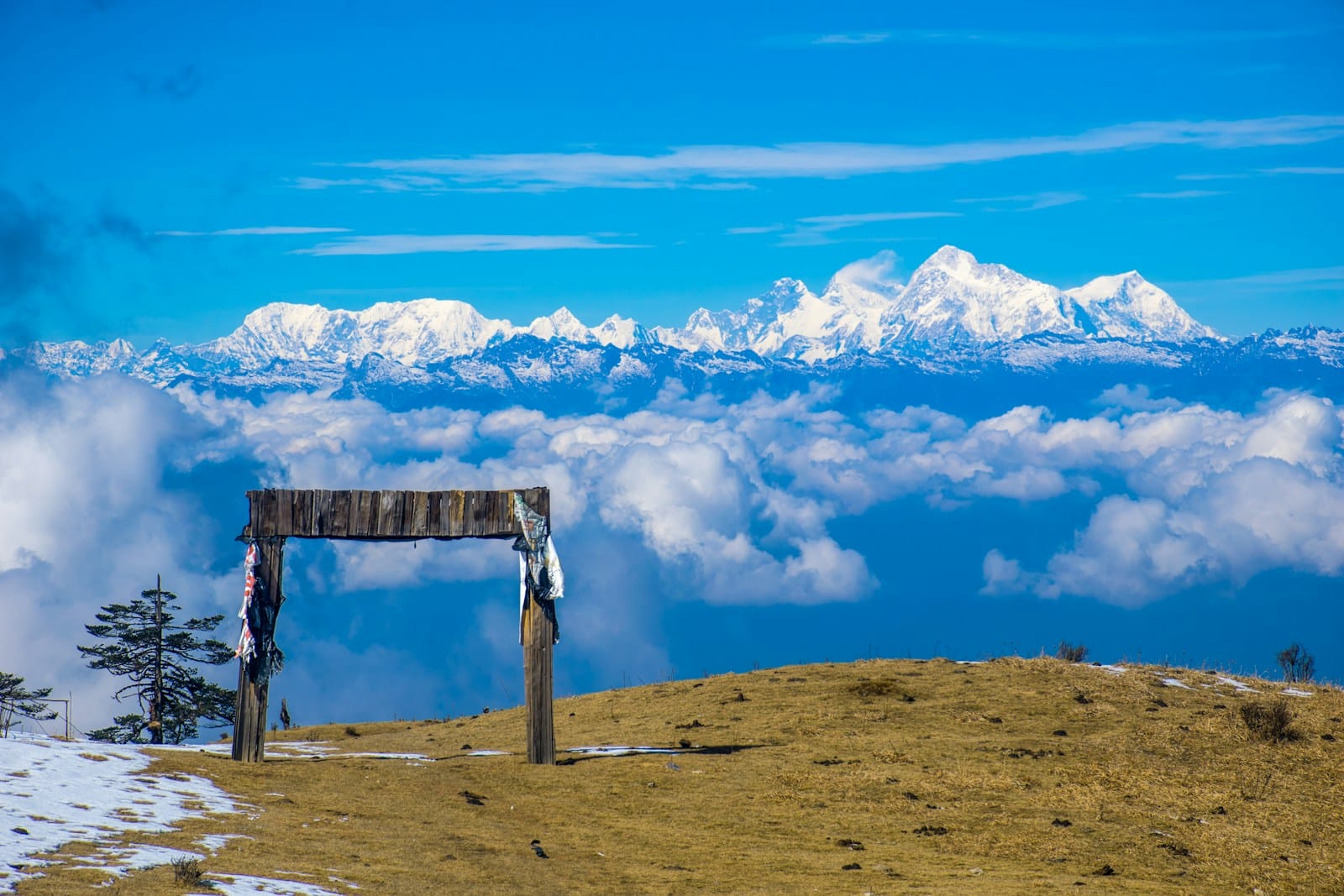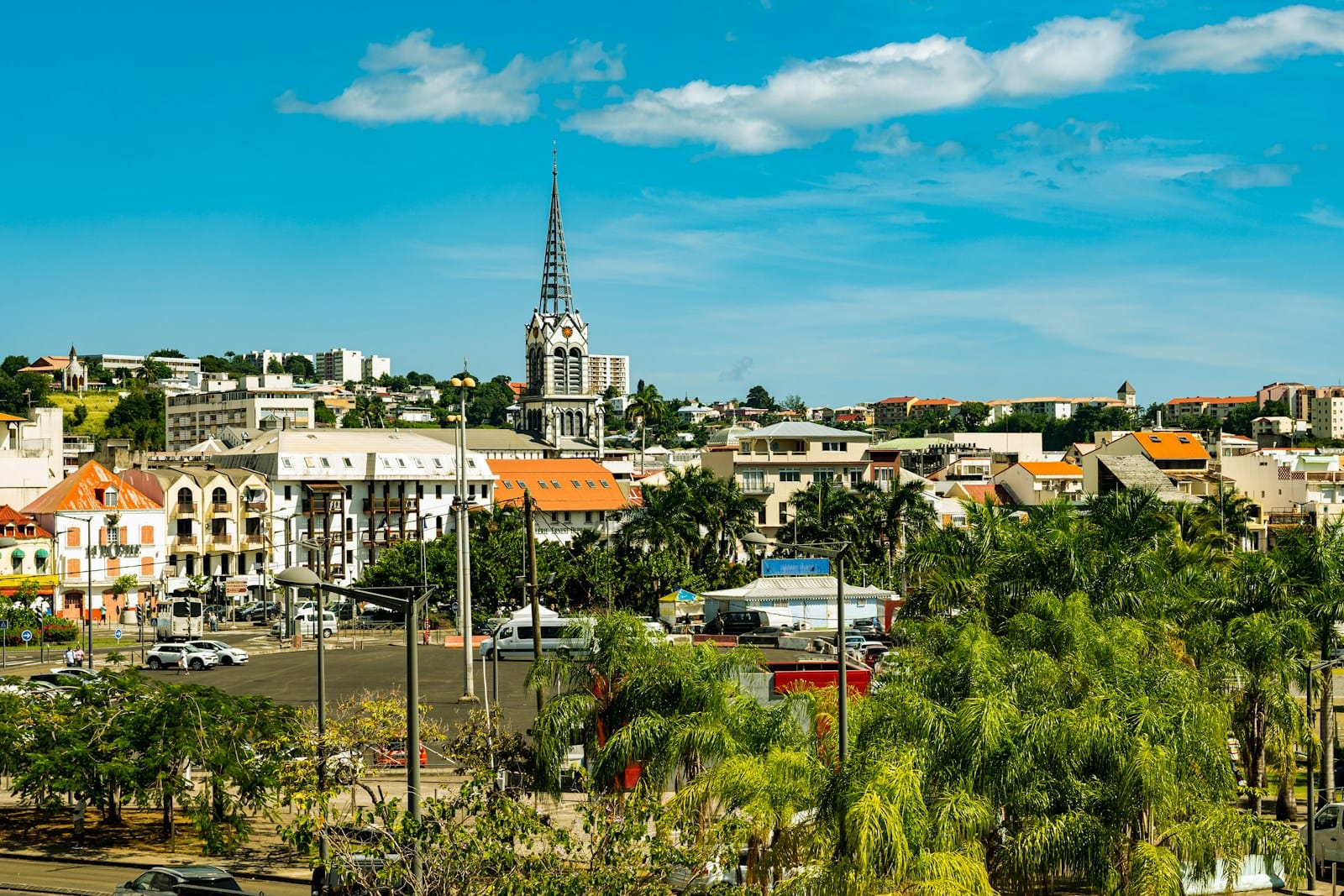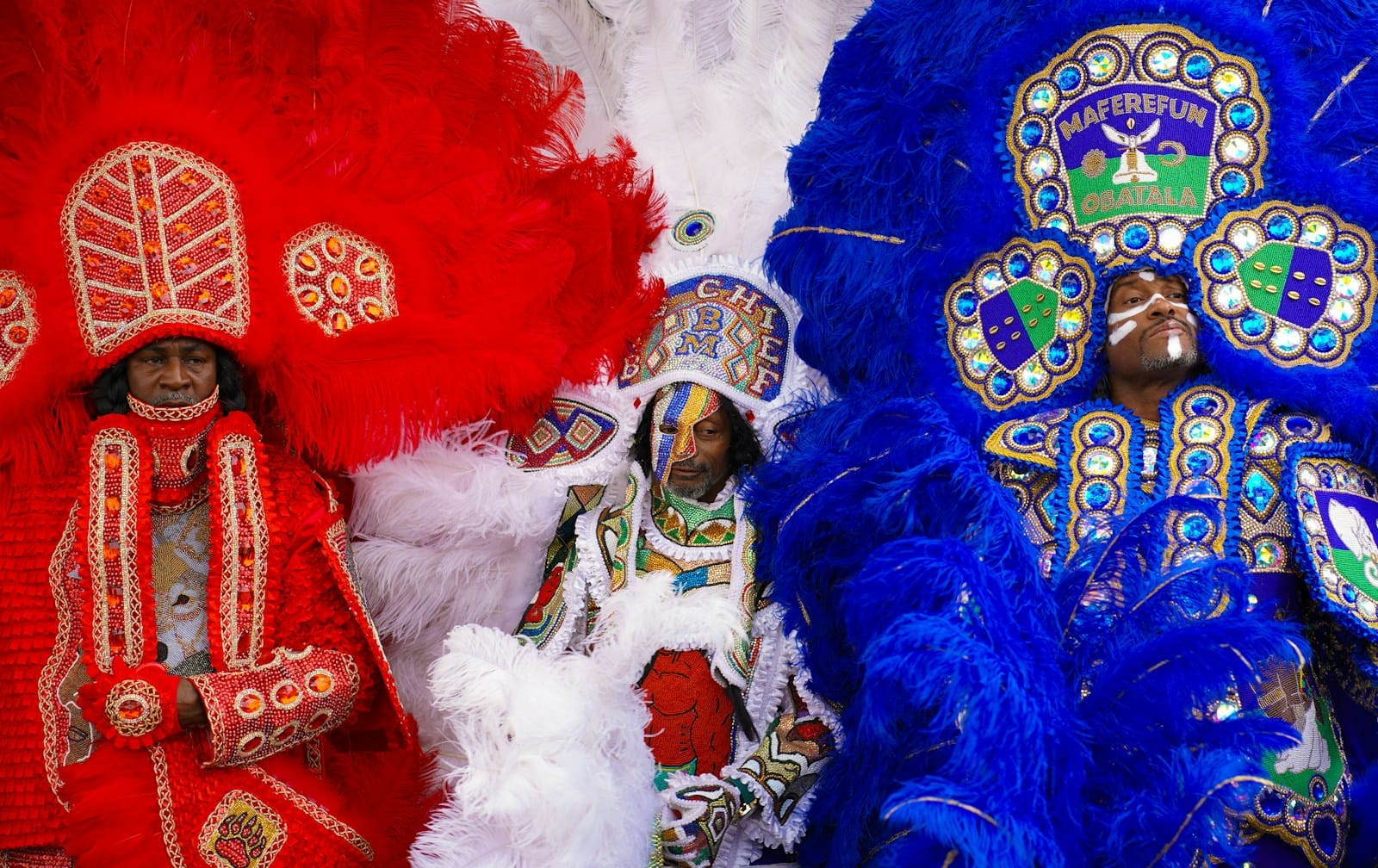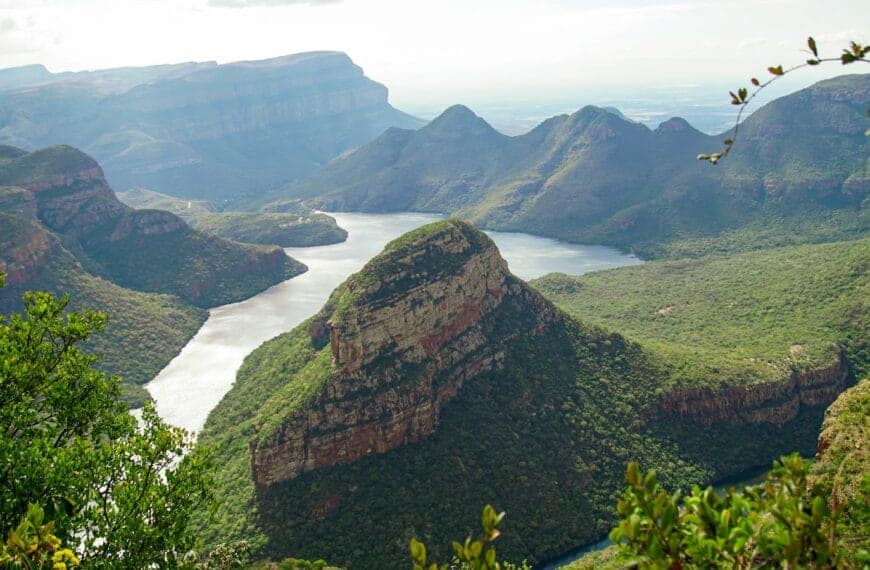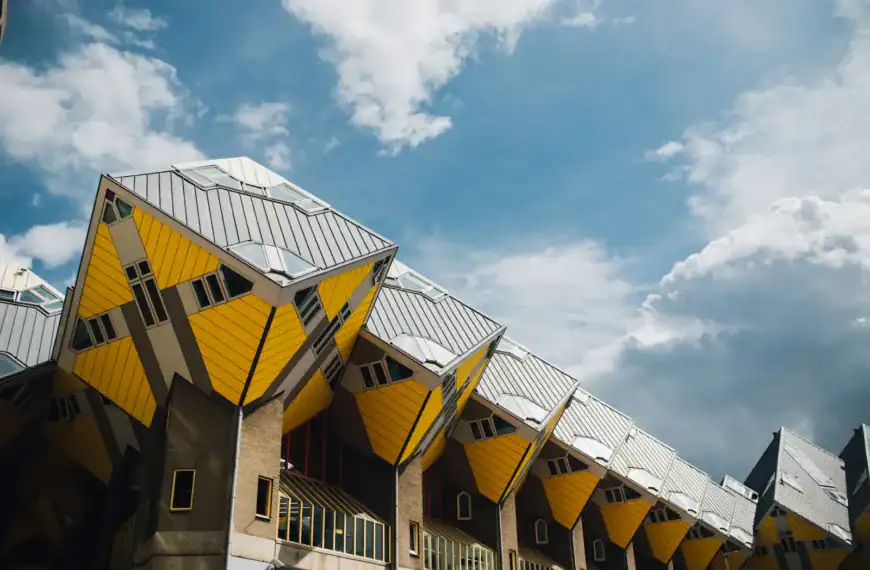Nepal Travel Guide: Temples, Treks, and Timeless Peaks
Intro to Nepal Travel Guide
Prayer flags flutter above icy passes. Rhinos roam subtropical jungles. Monasteries echo with chants beneath Himalayan peaks. In Nepal, ancient culture meets raw nature, offering everything from spiritual renewal to rugged adventure.
Whether you dream of trekking to Everest Base Camp, marveling at centuries-old pagodas in Kathmandu, or floating down jungle rivers in Chitwan, Nepal delivers unforgettable moments for every kind of traveler.
Start planning your trip with our complete Nepal Tour Guide — built to help you navigate regions, experiences, and practical essentials across this extraordinary mountain nation.
Travel Destinations in Nepal
Bandipur | Bhaktapur | Chitwan | Dhulikhel | Gorkha | Janakpur | Kathmandu | Lumbini | Nagarkot | Namche Bazaar | Patan (Lalitpur) | Pokhara | Tansen | Upper Mustang
💡Quick Facts:
Destination: Nepal
Continent: Asia
Country: Federal Democratic Republic of Nepal
Area: ~147,516 km²
Population: ~30 million (2025 est.)
Density: ~200/km²
Capital: Kathmandu
Regions/Subregions: Bagmati, Gandaki, Lumbini, Karnali, Madhesh, Koshi, Sudurpashchim, Province No. 1
Official Language: Nepali
Other Languages: Maithili, Bhojpuri, Tharu, Newar, Tamang, Sherpa, English (business/tourism)
Currency: Nepalese Rupee (NPR)
Time Zone: Nepal Standard Time (UTC+5:45, no DST)
Main Airports: Tribhuvan Intl. (KTM, Kathmandu), Gautam Buddha Intl. (BWA, Lumbini), Pokhara Intl. (PKR)
Climate: Ranges from subtropical in Terai plains to alpine in Himalayas
Known For: Mount Everest & Himalayan trekking, Lumbini (birthplace of Buddha, UNESCO), Kathmandu Valley temples (UNESCO), adventure tourism, Sherpa culture.
🛂Arrival Info:
Visa Requirements: Tourist visa required for most; available on arrival at Kathmandu and border points.
E-Visa: Apply online via Department of Immigration Nepal.
Visa-Free: SAARC nationals (limited days), Indian citizens (ID only).
Max Tourist Stay: Up to 90 days, extendable to 150.
🏥Health Info:
Vaccines Recommended: Hepatitis A/B, Typhoid, Rabies (if trekking/rural), Tetanus.
Risks: Altitude sickness (Everest, Annapurna, Langtang), food/waterborne illness, dengue (lowlands).
Hospitals: CIWEC Clinic Kathmandu, Grande Int’l Hospital, Norvic Int’l Hospital.
Tip: Travel insurance covering trekking/evacuation highly advised.
🚑 Check travel insurance options for travel emergencies, delays, and medical needs abroad — Get coverage here
💉 Stay Informed with Official Updates: WHO – International Travel & Health | CDC – Travel health updates
🚨Travel Advisory:
Safety Levels: Generally safe, but road accidents and altitude issues are common.
Regional Risks: Trekking routes can be hazardous (landslides, avalanches).
Civil Rights Concerns: LGBTQ+ travelers largely safe in cities, socially conservative in villages.
Official Advisories:
🌍Track Real-Time Official Updates: US Travel Advisory | UK Foreign Travel Advice | Government of Canada | NZ SafeTravel
🥳Holidays:
Dashain: September/October (longest Hindu festival)
Tihar/Diwali: October/November
Holi: March
Buddha Jayanti: April/May (Lumbini celebrations)
Indra Jatra: August/September (Kathmandu)
Republic Day: May 28
💰Visitor Info:
Currency Use: Cash preferred; ATMs in cities, unreliable in rural areas.
Tipping: Expected in trekking/guide services (10–15%).
Duty-Free: Up to 1 liter alcohol, 200 cigarettes.
Daily Budget (avg.):
Budget: $25–35
Mid-range: $50–120
Luxury: $200+
🛫Airports:
Tribhuvan International Airport (KTM) – primary entry point
Other key airports: Pokhara (PKR), Gautam Buddha Airport (BWA), and domestic hubs in Lukla and Bharatpur.
🧳 Delayed or canceled flight? Check if you’re eligible for compensation
🚍Transport:
Urban: Taxis, microbuses, ride-hailing apps (Pathao, Tootle).
Intercity: Tourist buses (Kathmandu–Pokhara), domestic flights essential for trekking access.
Driving: Left side; poor road conditions; IDP recommended.
Trekking: Flights to Lukla (Everest), Jomsom (Annapurna).
Scams: Trekking permit overcharging; only use official TIMS permits.
🚗 Book reliable airport transfers and in-city rides in advance. Reserve your ride here
🛰️Connectivity:
SIM/eSIM: Ncell, Nepal Telecom (NTC), Smart Cell.
Cost: SIMs cheap, 4G in cities; patchy in mountains.
Wi-Fi: Good in Kathmandu, Pokhara; lodge Wi-Fi often paid.
🛜 Stay connected abroad with affordable eSIM data packs. Get your eSIM here
📜Laws & Etiquette:
Alcohol: Legal age 18, widely available.
Dress Code: Modest in temples/monasteries.
LGBTQ+: Legal protections exist, but rural areas conservative.
Social Norms: Remove shoes before entering homes/temples; avoid touching heads.
Photography: Permission required in monasteries, no drones in restricted zones without permit.
👮Emergency Info:
Emergency Numbers: Police 100, Ambulance 102, Fire 101.
Tourist Police: Available in Kathmandu, Pokhara.
Embassy Links:
US Embassy Kathmandu
UK Embassy Kathmandu
🏛️ Use embassy locator tools: Embassies Worldwide
🌞Weather:
Best Time: October–November (clear skies, trekking) & March–April (flowers, milder climate).
Winter: Dec–Feb, cold in mountains, mild in Kathmandu.
Monsoon: June–Sept, heavy rain, landslide risk.
Altitude Note: Weather varies drastically between Terai plains and Himalayan peaks.
🌦️ Stay prepared—check the weather forecast for your destination — Weather Forecast
Nepal by Region – Where to Go
Nepal divides naturally into three main geographic zones — Himalayas, Hills, and Terai — each with diverse destinations.
- Central Nepal: Kathmandu Valley and Beyond
Kathmandu Valley is the cultural and spiritual heart of the country.
Kathmandu offers chaotic charm, ancient temples, and vibrant street life.
Patan and Bhaktapur are medieval cities filled with palaces, courtyards, and timeless architecture.
Nagarkot provides panoramic Himalayan views just an hour from the capital. - Western Nepal: Pokhara, Annapurna & Lumbini
This region is known for lakes, treks, and spiritual roots.
Pokhara is a peaceful lakeside city and the launch point for Annapurna treks.
Annapurna Region features trekking circuits, hot springs, and ethnic Gurung villages.
Lumbini is the revered birthplace of the Buddha and a UNESCO site of pilgrimage. - Eastern Nepal: Everest Region and Lower Himalayas
Best for iconic high-altitude trekking and remote monasteries.
Everest Region is accessed via Lukla and leads to Everest Base Camp, Gokyo Lakes, and Khumbu villages.
Tumlingtar and the Makalu area offer offbeat trails and true wilderness. - Southern Nepal: Terai Lowlands and Wildlife Reserves
Flat and subtropical, this region contrasts with the mountains above.
Chitwan National Park is famous for rhino safaris, jungle walks, and Tharu culture.
Bardia National Park is quieter and wilder, with better chances to spot tigers and elephants.
Janakpur, a major Hindu pilgrimage site, showcases ornate temples and Mithila art. - Far Western Nepal: Remote and Wild Frontiers
This is the least-visited region, ideal for true explorers.
Rara Lake is a hidden gem in alpine meadows, reachable by flights and long treks.
Api Nampa and Humla districts are culturally Tibetan and physically challenging to reach — but stunning.
Top Places to Visit in Nepal
Nepal blends sacred sites with natural wonders — here are the essential highlights grouped by theme.
- Cultural and Spiritual Capitals
Kathmandu Durbar Square holds ancient palaces, the Kumari Living Goddess, and rich Newar craftsmanship.
Patan is a serene mix of Buddhist and Hindu landmarks with intricate metalwork and traditional arts.
Bhaktapur is the best-preserved medieval city — no cars, no noise, just timeless architecture and cobblestones. - Trekking and Mountain Adventure
Everest Base Camp Trek offers world-famous trails, Sherpa culture, and panoramic glaciers.
Annapurna Circuit is diverse in climate and landscape — crossing from jungle to snowy highlands.
Langtang Valley is accessible from Kathmandu and mixes alpine beauty with Tibetan influence.
Manaslu Circuit is a remote, less-crowded alternative with spectacular ridgeline views. - Wildlife and Jungle Experiences
Chitwan National Park provides guided safaris where you might spot rhinos, crocodiles, and Bengal tigers.
Bardia National Park is more remote, with riverboat safaris and traditional homestays.
Koshi Tappu Wildlife Reserve is a birdwatcher’s paradise and home to wild water buffalo. - Iconic Landscapes and Relaxation
Pokhara is Nepal’s chill-out capital with lakeside cafes, paragliding, and nearby hiking.
Nagarkot and Dhulikhel offer sunrise Himalayan views within hours of Kathmandu.
Rara Lake, set in alpine silence, is one of Nepal’s most stunning and least-touristed natural wonders.
How to Choose Where to Go in Nepal
Let your travel goals and time determine your ideal Nepal route.
- If you’re interested in culture and architecture, focus on the Kathmandu Valley and nearby towns like Bhaktapur and Patan. Add Lumbini for spiritual pilgrimage.
- For adventure and trekking, choose the Everest Region or Annapurna depending on your time and fitness level. Everest is more iconic, while Annapurna offers greater variety and accessibility.
- If you’re after wildlife and nature, visit Chitwan or Bardia for safaris. Bardia is wilder and less visited, while Chitwan is more developed with better infrastructure.
- If you want short trips, consider a mix of Kathmandu, Nagarkot, and Pokhara over 7–10 days. This gives you culture, views, and relaxation with minimal logistics.
- For offbeat travel, head to Humla, Rara Lake, or the Manaslu region — all require more planning but reward with raw, untouched Nepal.
How to Get Around Nepal
Nepal’s transport network can be rough around the edges, but planning ahead helps you navigate with ease.
- Domestic flights are the quickest way to access mountain and remote regions. Lukla (Everest), Pokhara (Annapurna), and Nepalgunj (Far West) are common gateways. Book early and plan buffer days — weather delays are frequent.
- Tourist buses run between major cities like Kathmandu, Pokhara, Chitwan, and Lumbini. They’re affordable and reasonably comfortable, with AC and meal stops.
- Local buses and microbuses serve towns and rural areas but can be crowded and slow. These are best for budget travelers with flexible schedules.
- Private cars and drivers can be arranged for intercity travel — faster and safer than local buses, especially for families or groups.
- Taxis, rickshaws, and ride-hailing apps like Pathao operate within Kathmandu and Pokhara. Always confirm fares in advance.
Trekking involves walking for days or weeks, often through remote terrain with no vehicle access. Porters and guides are strongly recommended for multi-day hikes.
Travel Budget & Costs in Nepal
Nepal is one of Asia’s best-value destinations, whether you’re trekking or temple-hopping.
- Budget travelers can spend $20–$35 per day by using local guesthouses (teahouses), eating dal bhat, and using buses.
- Mid-range travelers spend $50–$100 per day with nicer hotels, guided day tours, and short domestic flights.
- Luxury travelers should expect to spend $150–$300 per day on private trekking packages, high-end jungle lodges, or boutique heritage hotels.
- Sample prices include dal bhat (national meal) for $2–$3, teahouse rooms from $5–$15 per night, Kathmandu hotels starting at $30 per night, and domestic flights from $100–$200 depending on route.
- Trekking permits range from $20–$50 depending on the region. TIMS (Trekkers’ Information Management System) and national park fees are mandatory in most areas.
Tips for saving money include eating at local restaurants, avoiding peak-season flight surcharges, and joining group treks instead of private ones.
Best Time to Visit Nepal
Nepal’s seasons directly impact trekking, wildlife, and cultural festivals.
- Spring (March to May) is one of the best times to visit Nepal. Clear skies and moderate temperatures make this ideal for trekking, especially in the Everest and Annapurna regions. Rhododendron forests bloom beautifully.
- Autumn (September to November) is the other peak season. Post-monsoon air is crisp, with great mountain visibility and major festivals like Dashain and Tihar.
- Winter (December to February) is cold but dry. Good for low-altitude treks and visiting Terai parks. Snow may block high passes like Thorong La.
- Summer (June to August) brings monsoon rains. Trekking trails are muddy and leech-prone, but the valleys are lush and quiet. Ideal for Upper Mustang and Dolpo, which lie in rain shadows.
For safaris in Chitwan or Bardia, late autumn to spring is best — drier landscapes mean better animal sightings.
Must-See Experiences in Nepal
Nepal tours and unforgettable things to do in Nepal span high-altitude wonder, sacred sites, and wild adventures.
- Trek to Everest Base Camp through Namche Bazaar, Tengboche Monastery, and glacial valleys. The views and cultural encounters are unmatched.
- Float through Chitwan National Park in a dugout canoe, spotting crocodiles, rhinos, and exotic birds at sunrise.
- Paraglide over Pokhara with Annapurna views and Phewa Lake sparkling below.
- Visit the Swayambhunath Stupa (Monkey Temple) in Kathmandu for panoramic city views and a taste of Tibetan-Buddhist fusion.
- Tour Bhaktapur’s timeless courtyards, pottery lanes, and intricately carved temples.
- Attend a traditional puja (offering ceremony) at Pashupatinath, Nepal’s holiest Hindu site, especially during sunset rituals along the Bagmati River.
- Explore Patan’s art workshops and metalcraft studios where centuries-old techniques are still alive.
- Ride through the Terai jungle on elephant-back or jeep safari, depending on conservation practices at your chosen park.
- Take a helicopter tour to Everest for a once-in-a-lifetime aerial view of the world’s highest peak.
Book immersive Nepal tours and experience unforgettable things to do in Nepal — from sacred temple rituals and highland treks to floating markets and lakeside food adventures.
Best Travel Itineraries in Nepal
These suggested routes offer variety by region, activity, and trip length.
- 7-Day Cultural & Nature Intro: Kathmandu → Bhaktapur → Pokhara → Chitwan. Combines heritage, relaxation, and wildlife.
- 10-Day Annapurna Adventure: Kathmandu → Pokhara → Ghorepani Poon Hill Trek → Ghandruk → Pokhara. Great for moderate hikers.
- 14-Day Everest Base Camp: Fly to Lukla → Namche Bazaar → Tengboche → Everest Base Camp → Return via same route. Best with guide and porter.
- 10-Day Buddhist Circuit: Kathmandu → Lumbini → Kapilvastu → Tilaurakot → Pokhara. Ideal for spiritual travelers and history buffs.
- 14-Day Wild Nepal: Kathmandu → Bardia → Rara Lake → Nepalgunj → Kathmandu. For nature lovers seeking the road less traveled.
Local Cuisine & Culinary Experiences
Nepali cuisine is humble yet satisfying — hearty meals for mountain days.
- Dal Bhat is the national staple: lentil soup, rice, vegetables, and sometimes meat, served with endless refills.
- Momos are Tibetan-style dumplings steamed or fried, filled with meat or vegetables and served with spicy chutney.
- Sel Roti is a sweet, crispy rice flour ring often enjoyed during festivals.
- Newari cuisine includes rich, spicy dishes like buffalo choila, bara (lentil pancakes), and rice beer.
- Gundruk is a traditional fermented leafy green, served as soup or side.
- Try a traditional thakali set meal — a regional twist on dal bhat with added ghee, pickles, and wild herbs.
- Join a Nepali cooking class in Kathmandu or Pokhara to learn how to prepare local curries, snacks, and desserts.
- Visit Asan Bazaar for street snacks and fresh spice shopping, or explore organic cafés and roasteries in Patan and Thamel.
Travel Safety & Cultural Etiquette in Nepal
Nepal is generally very safe for travelers, but common-sense caution goes a long way.
- In cities, petty theft can happen — keep valuables secure and avoid isolated areas after dark.
- Altitude sickness is a serious concern on treks. Acclimate slowly, hydrate, and learn to recognize symptoms.
- Road conditions are poor in many areas. Avoid overnight buses and always wear seatbelts.
- Dress modestly, especially at religious sites. Cover shoulders and legs and remove shoes before entering temples or homes.
- Always ask before photographing people, particularly monks or elders.
- Respect local customs — use your right hand for eating and giving, and avoid pointing feet at sacred objects.
- Learn a few Nepali phrases like “Namaste” (hello) and “Dhanyabad” (thank you). These go a long way in building goodwill.
Tipping is customary in tourism. Leave 10% at restaurants and tip guides, porters, and hotel staff generously based on service.
Where to Go Next – Pair Nepal with These Destinations
- India offers cultural depth and easy overland access via Varanasi or Delhi. Combine Nepal’s mountains with India’s temples and cuisine.
- Bhutan is a perfect pairing for Himalayan landscapes and Buddhist serenity. Fly from Kathmandu to Paro for a dual-nation pilgrimage.
- Sri Lanka contrasts beautifully with beaches, tea plantations, and tropical Buddhist sites. Fly via Delhi or Kuala Lumpur.
- Thailand offers R&R after a trek — add island time or spa retreats after Himalayan trails.
India Travel Guide | Bhutan Travel Guide | Thailand Travel Guide | Sri Lanka Travel Guide
Final Planning Checklist for Nepal
- Confirm trekking permits (TIMS, conservation area) and passport-sized photos
- Book domestic flights early if visiting Everest, Pokhara, or remote regions
- Schedule at least one buffer day after trekking in case of delays
- Pack for all climates — warm layers, rain protection, and sun gear
- Bring a water filter or purification tablets — bottled water is limited in the mountains
- Register with your embassy or local trekking agency before remote hikes
- Download offline maps, trail apps, and a Nepali-English phrasebook
- Get travel insurance that covers altitude and evacuation
- Respect local customs, remove shoes before entering temples, and greet with “Namaste”
- Prepare cash — ATMs are limited outside major towns
Explore Nepal with confidence using our trusted tips, local insights, and region-by-region planning tools.

